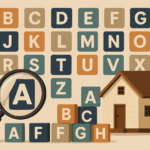
Key takeaways
Predictions for interest rates in 2025 vary: 2 of the big banks forecast gradual rate cuts starting in February, ending 2025 at ~3.35–3.6%. The other 2 big banks now say rate cuts will strat in May.
Inflation control, economic growth, and employment will dictate rate movements, with stability or gradual cuts likely.
Long-term interest rates are expected to remain higher than pre-pandemic levels, averaging around 2.5–3% by 2029.
Property investors may benefit from less competition now, with rate cuts potentially reigniting market growth later.
Property investors and homeowners around Australia are eagerly waiting for the day when the Reserve Bank of Australia (RBA) decides to lower interest rates again, in the hope that lower rates will go some way to ease the burden of higher mortgage repayments and strained affordability.
With the official interest rate paused throughout 2024, holding steady at 4.35%, many are asking the questions:
- What will happen next?
- Are interest rates expected to go up again?
- Are we over the worst?
- What are the interest rate forecasts in Australia?
To give you some insight to what ahead I'd like to 1st start by discussing what's happening in the past 5 years, what interest rates might look like in 2025, the big banks' interest rate predictions for 2025 and the long-term interest rate forecast for Australia.
Most importantly, I will discuss what the future might hold for property investors, homeowners, and the broader Australian economy.
Past 5-year interest rate movements in Australia
The chart above illustrates Australia's cash rate trajectory over the past 15 years, highlighting significant changes influenced by events like the COVID-19 pandemic which led to "war time" interest rate lows and subsequent inflation which led to the RBA raising rates.

Here’s a summary of the key changes in the 5 years from 2019 to 2024:
- 2019: The RBA began cutting interest rates in 2019 in response to economic stagnation and global uncertainties. In June, the cash rate was cut by 0.25%, again by 0.25% in July, a third 0.25% cut (to 0.75%) was made in October that same year. The RBA's decision to cut rates was intended to support employment growth and to increase confidence that inflation would rise to be in the target range.
- 2020: The COVID-19 pandemic led the RBA to continue cutting the cash rate in an effort to stimulate the economy. It reached a record low of 0.10% in November 2020.
- 2021: As Australia battled through COVID-19 lockdowns, the RBA maintained the cash rate at 0.1%, aiming to support the economy. With a mix of government stimulus and cheap money, the housing market boomed, leading to skyrocketing property prices.
- 2022: A sharp increase in inflation led the RBA to begin raising the cash rate again, marking the beginning of one of the sharpest rate-hiking cycles in its history. The first hike came in May 2022, when the RBA raised the cash rate to 0.35%, it then hiked another 7 times to reach 3.10% in December as it tried to cool inflation and curb household spending.
- 2023: The RBA increased the cash rate five times in February, March, May, June and November of 2023 when it reached 4.35%, still in an effort to curb inflation. The RBA did not change the cash rate in January, April, July, August, September, or October.
- 2024: The Reserve Bank did not raise the cash rate in 2024, but wavering inflation levels continued to hold off any potential rate cuts. As of November 2024, Australia’s interest rate remains unchanged at 4.35%.
This snapshot shows how the RBA’s policies and interest rate decisions closely follow the country’s economic health.
Interest rates fell dramatically during the global financial crisis, but today Australia's interest rate sits at 4.35%, which is the highest it's been since November 2011.
What will happen to interest rates in 2025?
The jump from a 0.10% interest rate in 2020 to today’s 4.35% is striking.
It has left many mortgage holders grappling with significantly higher monthly repayments, amplifying financial strain.
Since the last rate hike in November 2023, the Reserve Bank of Australia (RBA) has held the cash rate steady, but discussions about potential adjustments in 2025 are heating up.
Critics argue these changes are overdue.
The RBA has been accused of being too slow to act compared to other advanced economies, where rates have surpassed 5% to curb inflation.
In contrast, Australia’s peak rate remains lower at 4.35%.
This disparity has positioned Australia as a late mover in reducing rates, likely because inflation surged later here than in other countries, prompting more gradual hikes. Looking ahead, economists are divided: some predict a cut in early 2025, while others foresee a prolonged pause.
Either way, shifts in interest rates will significantly impact the financial landscape for borrowers and the broader economy.

Note: Overall, interest rate forecasts in Australia for 2025 involve many moving parts - inflation control, Australia’s economic growth, housing market trends, employment and wage growth and even global economic conditions.
So, there are three key scenarios for how we might see interest rates in the next 12 months.
Scenario 1: There could be a gradual rate cut if inflation trends downward and the economy slows, easing pressure on households and supporting growth.
Scenario 2: There could be cash rate stability if inflation and employment data stay within target ranges, with the RBA pausing any significant changes to allow the economy to adjust.
Scenario 3: There could even be rate hikes if inflation remains unexpectedly high, though this seems less likely than the other 2 scenarios.
However, most analysts expect that by mid-2025, rates may be stable or slightly lower than today, depending on inflation and growth trends; either way, the RBA is likely to tread cautiously.
Biggest banks interest rates predictions for 2025
According to the RBA’s latest forecast, inflation won’t hit the middle of its 2% to 3% target range until 2026.
Many economists argue that this pace is too slow and risks inflation becoming entrenched.
They believe it’s better to address inflation decisively now rather than let it become a persistent issue.
Persistently high inflation harms consumers by continually increasing the cost of living and will force interest rates to stay higher for longer, potentially leading to an economic recession.
If the RBA believes its own forecast that current interest rate settings and expectations will be insufficient to bring inflation into the target range within an acceptable time frame then, technically, it should raise rates now.
With this in mind, it’s difficult to determine exactly what the interest rate movements will be in 2025 due to many moving parts and differing views.
But, to give an idea of what many think the RBA might do next, here are the big 4 bank interest rate forecasts in Australia, including what the cash rate may reduce to.
- ANZ: Predicts two 0.25% cuts starting in May 2025, with the cash rate ending 2025 at 3.85%.
- CBA: Predicts four 0.25% cuts starting in February 2025, with the cash rate ending the year at 3.35%.
- Westpac: Predict four 0.25% cuts, starting in May 2025, with the cash rate ending the year at 3.35%.
- NAB: Predicts five 0.25% cuts starting in May 2025, with the cash rate reaching 3.1% in early 2026.
While the forecasts vary slightly, there is a common expectation that we won’t see substantial rate cuts until late 2025 or early 2026.
The variation in predicted interest rates is likely due to the banks differing opinions on how quickly the RBA's rate hikes will cool inflation.
After all, the RBA has pushed back its timeline for getting inflation back to its target band until December 2026, citing a sharp rise in projected government spending as one of the reasons why growth was expected to pick up next year.
Meanwhile, the money market thinks rates will be cut soon as shown in the chart below.
This yield curve indicates that the cash rate this time next year will be 3.46%, which is 0.89% lower than it is today.
In short, the money markets are betting that interest rates will fall by circa 1% in 2025.

Long-term interest rate forecast for Australia
I know homeowners with a mortgage, investors and business owners would love to know what interest rates to expect over the next few years, and looking beyond 2025, the outlook for interest rates will depend on several factors, including global economic conditions, inflation trends, and Australia’s economic growth.
I see interest rates remaining higher over the next decade than they were over the last decade, so property investors should factor this into their strategies.
Of course, the RBA’s official cash rate is based on several different macroeconomic factors, such as inflation, economic growth, global market trends, unemployment figures and central bank policy shifts.
With so many moving parts, it is very difficult to accurately determine interest rate predictions for the next 5 years in Australia or forecast long-term future interest rates.

Tip: Remember, the RBA’s key role is ultimately to maintain Australia’s stable financial system, which it does by maintaining a target inflation rate of 2-3%, a low unemployment rate and promoting economic prosperity.
This is why the RBA develops monetary policy and continually adjusts the cash rate to achieve its financial goals.
However, let’s look into the crystal ball a little...
- 2026: Economists anticipate that the RBA will begin to ease rates more significantly if inflation is under control. A cash rate of around 3.25% could be on the cards as the economy stabilises and unemployment remains low.
- 2027-2028: If Australia can avoid a falling into a recession, interest rates could even trend back to pre-pandemic levels of around 2.5-3%. However, much will depend on how global inflation plays out, particularly if geopolitical tensions continue to impact supply chains and energy prices.
- 2029: By this point, the RBA may have settled into a new normal, with rates stabilising around **2-2.5%**. This would still be above the ultra-low levels of the pandemic years but more manageable for borrowers compared to the current environment.
What does this mean for property investors?
There is a lot of uncertainty around at the moment.
However, the continually shifting predictions and current high interest rate environment continue to present opportunities for investors.
As will the eventual interest rate cut.
The fact is, those property investors who can afford to invest now will benefit from less competition.
So, if you’re a seasoned investor with a long-term view, this countercyclical period could be a good time to strategically enter the market, anticipating that rate cuts — when they do come — will reignite price growth.
And, while a cash rate cut may be on the horizon, remember our old adage, “Time in the market beats timing the market”.
There’s a saying in property circles that goes:
When was the best time to buy property? - 20 years ago! When is the second-best time? - Today!
In other words, you buy your next investment property when you can afford to, and when you are ready to.














